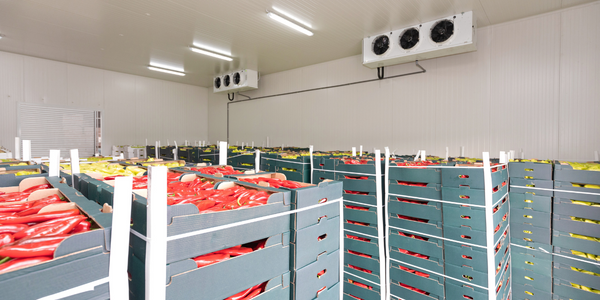Download PDF
Revolutionizing Retail Operations with IoT: A Case Study of a Major Canadian Retailer
Technology Category
- Sensors - Flow Meters
- Sensors - Liquid Detection Sensors
Applicable Industries
- Electronics
- Transportation
Applicable Functions
- Logistics & Transportation
Use Cases
- Demand Planning & Forecasting
- Transportation Simulation
Services
- System Integration
The Challenge
One of Canada's largest retailers, with a network of over 400 stores, was facing significant challenges in its supply chain operations. The company was struggling with network flow volatility, which was causing bottlenecks and creating issues with labor and transportation planning. The goal was to improve on-shelf availability by smoothing demand and aligning labor and transportation capacity. The company was also challenged with moving goods efficiently while reacting to merchant requests. They needed to evaluate options such as adjusting demands, adding another shift at the distribution center (DC), accessing the temporary labor pool, or accessing flexible transportation capacity. Furthermore, the company needed to plan daily for the next day, taking into account near-term capacity problems. There were challenges in aligning capacity with demand and blocking flows of excess demand based on revised capacities and merchant priorities.
About The Customer
The customer is one of Canada's largest retailers, offering a wide range of merchandise including apparel, housewares, small appliances, electronics, hardware, and grocery items. The company also provides specialty services such as pharmacies, garden centers, and vision centers. With a network of over 400 stores, the retailer has a significant presence across the country. The company was facing challenges in its supply chain operations, particularly in terms of network flow volatility, labor and transportation planning, and daily planning for near-term capacity problems. The goal was to improve on-shelf availability and efficiency in moving goods while reacting to merchant requests.
The Solution
The company partnered with o9, a leading provider of AI-powered supply chain solutions, to address these challenges. o9 helped the company create a logistics forecast by taking the previous year's data and applying machine learning algorithms that were enriched based on future events planned by the merchants. This approach allowed for scenario planning and helped the company anticipate and manage demand more effectively. With o9, a weekly plan was created based on current store demands, operating at an item/store/day granularity. This workflow drove tactical capacity planning changes before smoothing flow based on capacity limitations and flow prioritization defined by the merchant teams. The day plan, executed once a day, was driven off the confirmed store order drop for execution and was at an item/store/day granularity. This workflow also drove next day capacity planning changes before blocking flow based on capacity limitations and flow prioritization defined by the merchant teams. The o9 knowledge graph was used to build fully integrated end-to-end flow planning models and machine learning-based logistics forecasting.
Operational Impact
Quantitative Benefit
Related Case Studies.

Case Study
Remote Temperature Monitoring of Perishable Goods Saves Money
RMONI was facing temperature monitoring challenges in a cold chain business. A cold chain must be established and maintained to ensure goods have been properly refrigerated during every step of the process, making temperature monitoring a critical business function. Manual registration practice can be very costly, labor intensive and prone to mistakes.

Case Study
Airport SCADA Systems Improve Service Levels
Modern airports are one of the busiest environments on Earth and rely on process automation equipment to ensure service operators achieve their KPIs. Increasingly airport SCADA systems are being used to control all aspects of the operation and associated facilities. This is because unplanned system downtime can cost dearly, both in terms of reduced revenues and the associated loss of customer satisfaction due to inevitable travel inconvenience and disruption.

Case Study
IoT-based Fleet Intelligence Innovation
Speed to market is precious for DRVR, a rapidly growing start-up company. With a business model dependent on reliable mobile data, managers were spending their lives trying to negotiate data roaming deals with mobile network operators in different countries. And, even then, service quality was a constant concern.

Case Study
Digitize Railway with Deutsche Bahn
To reduce maintenance costs and delay-causing failures for Deutsche Bahn. They need manual measurements by a position measurement system based on custom-made MEMS sensor clusters, which allow autonomous and continuous monitoring with wireless data transmission and long battery. They were looking for data pre-processing solution in the sensor and machine learning algorithms in the cloud so as to detect critical wear.

Case Study
Cold Chain Transportation and Refrigerated Fleet Management System
1) Create a digital connected transportation solution to retrofit cold chain trailers with real-time tracking and controls. 2) Prevent multi-million dollar losses due to theft or spoilage. 3) Deliver a digital chain-of-custody solution for door to door load monitoring and security. 4) Provide a trusted multi-fleet solution in a single application with granular data and access controls.






